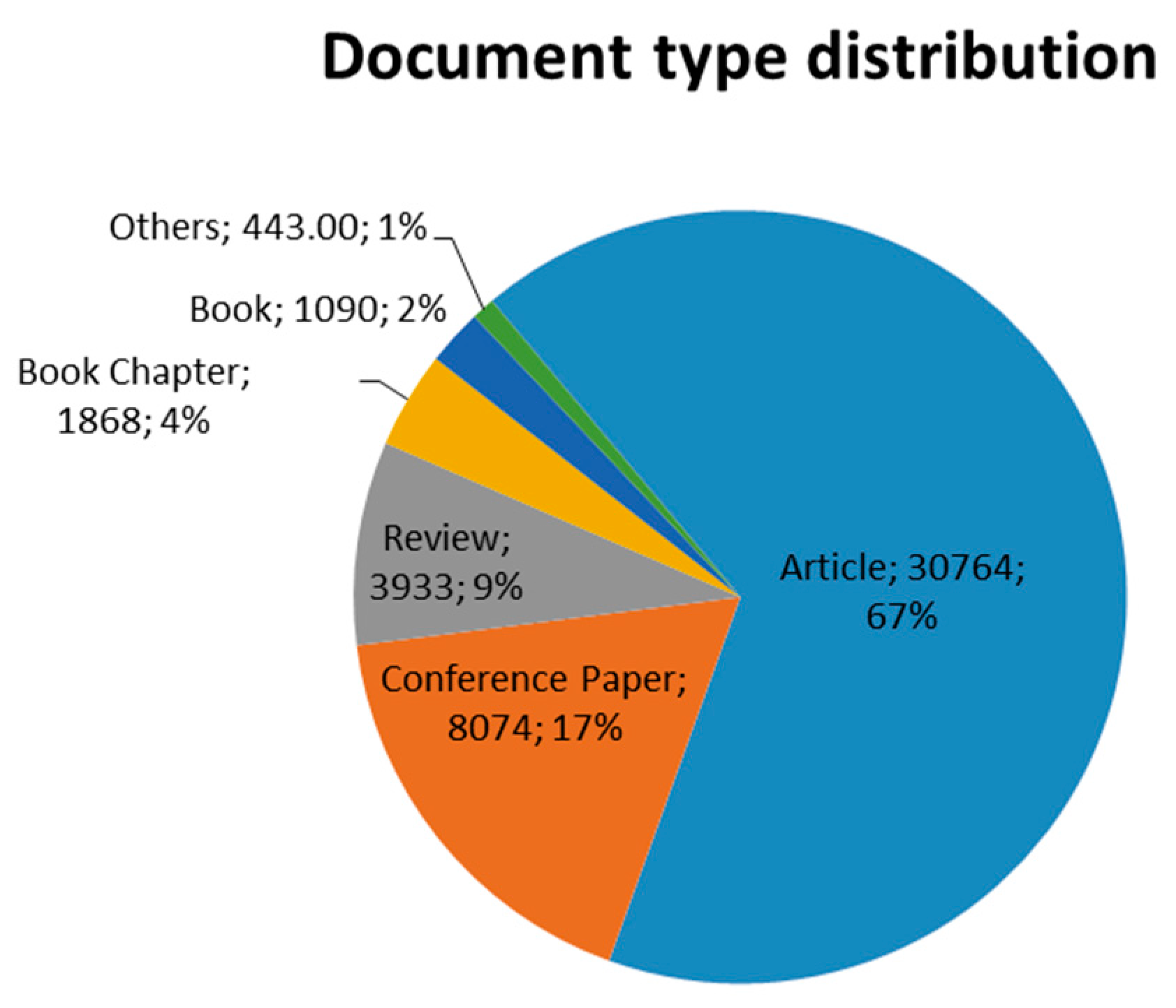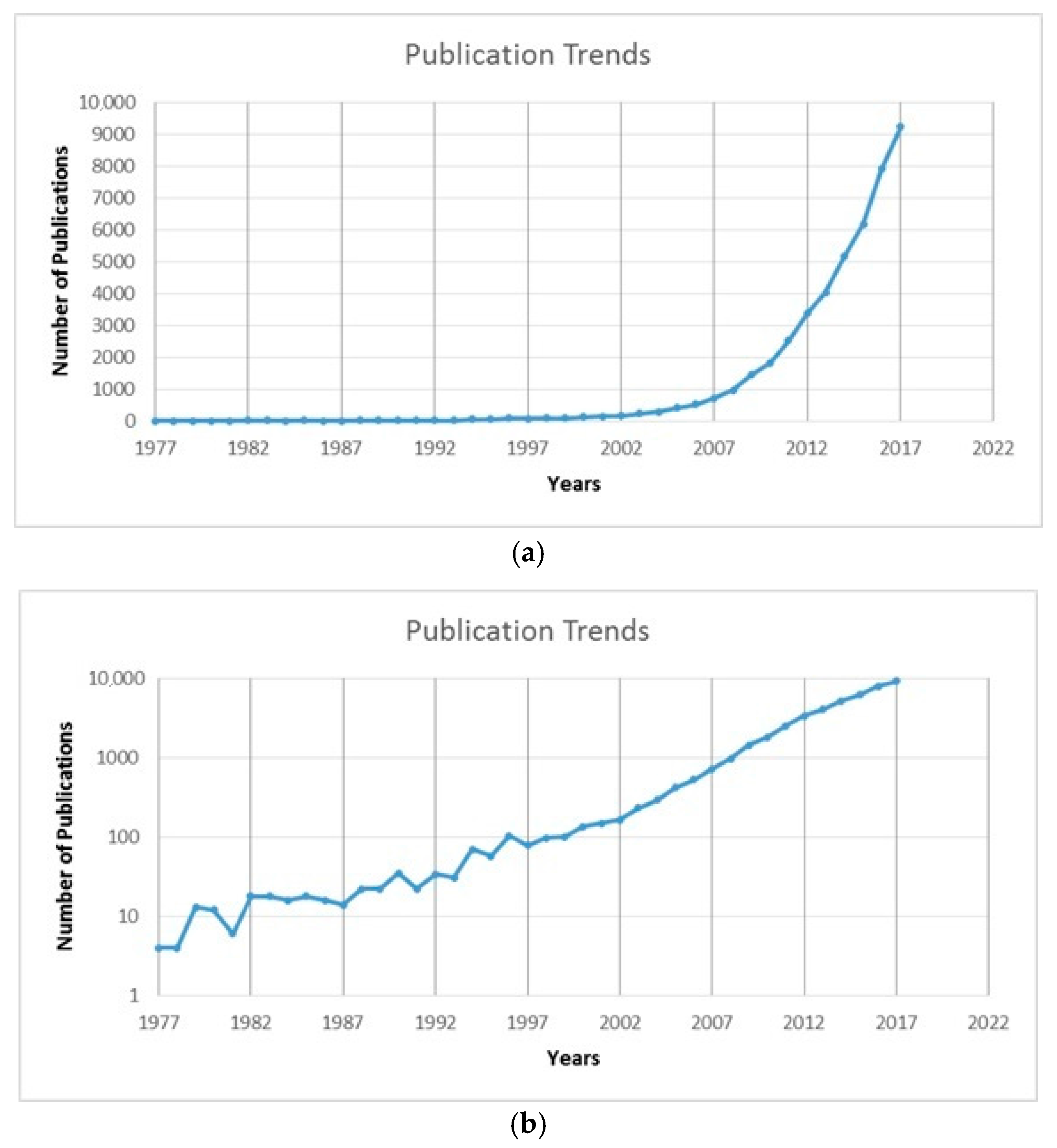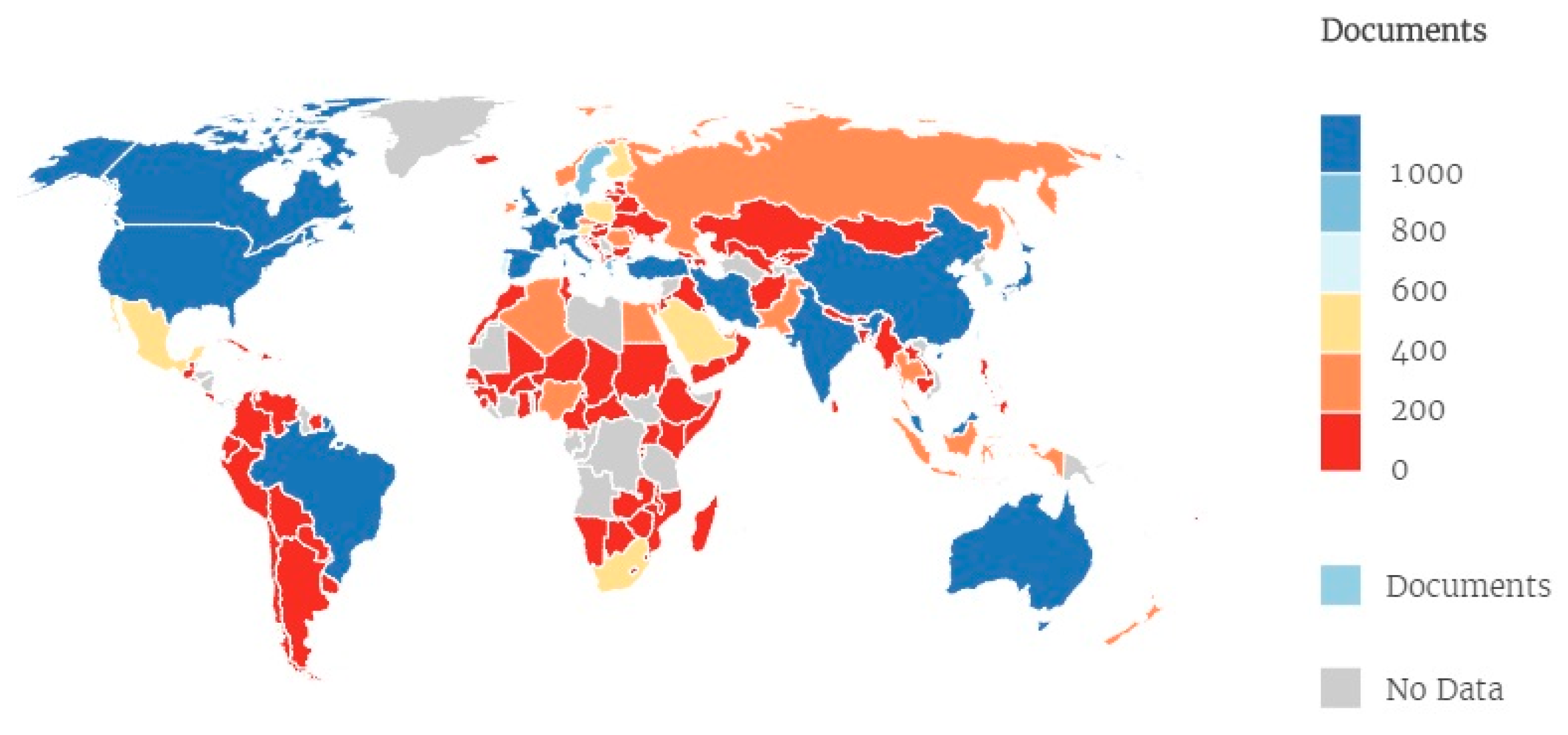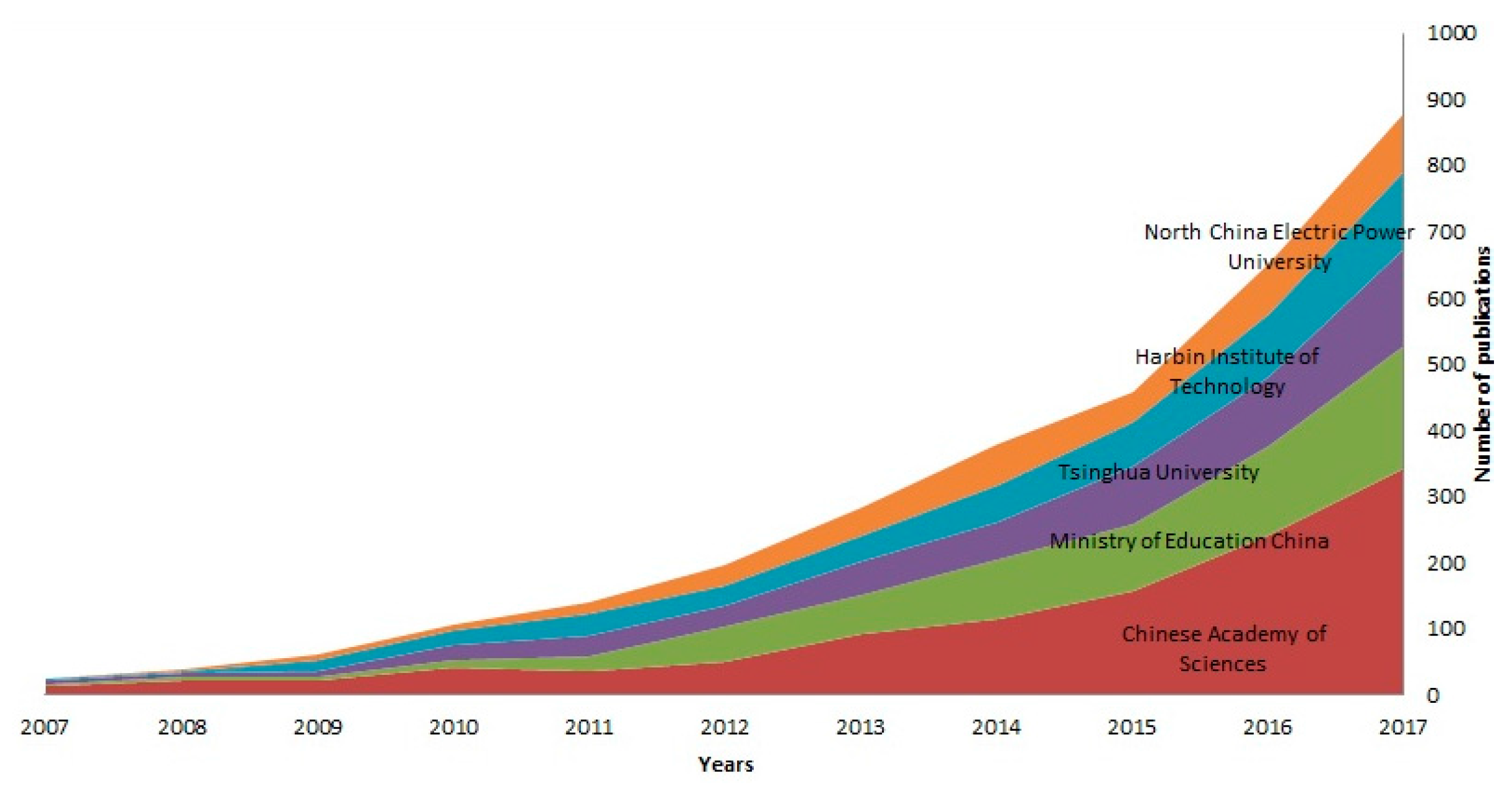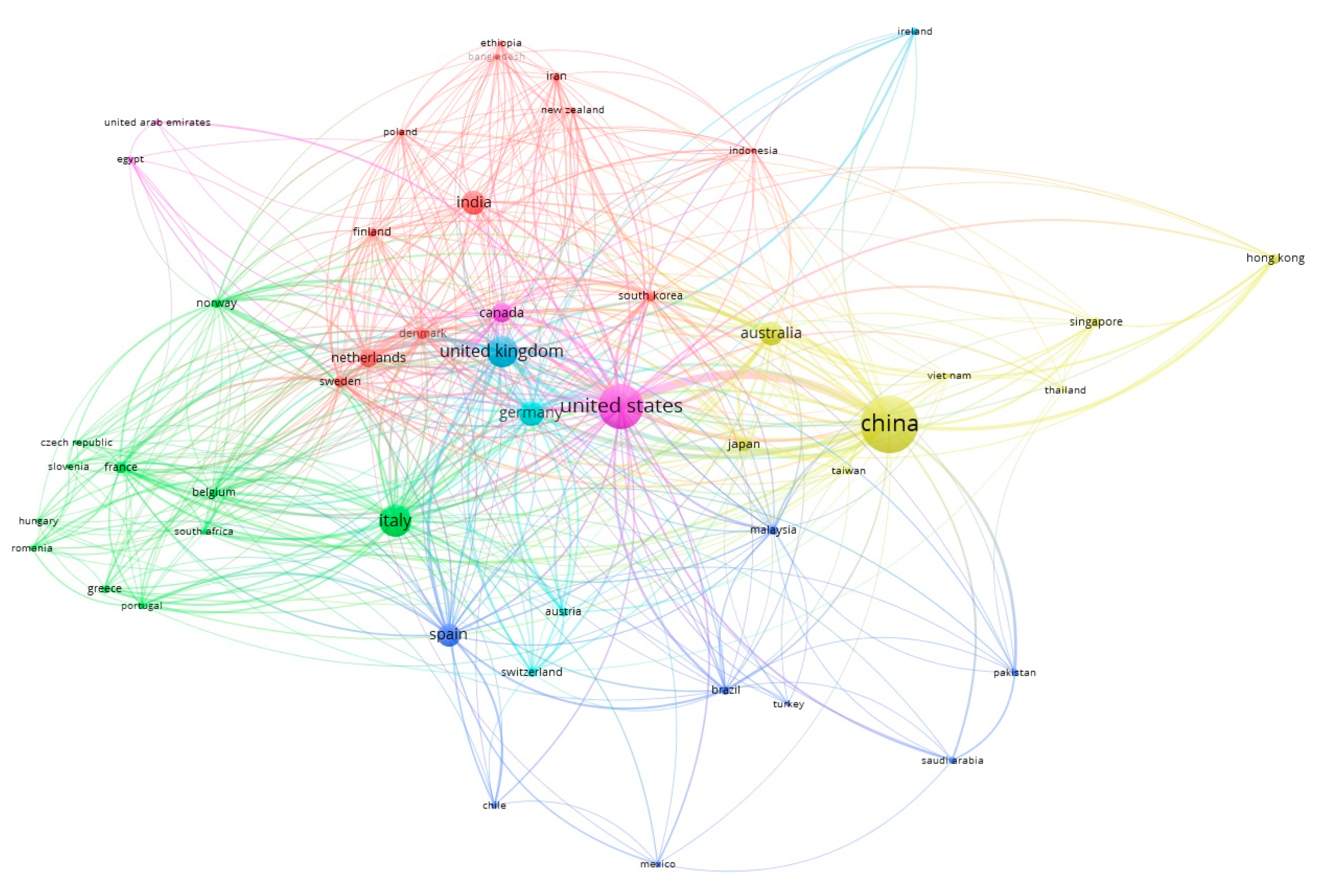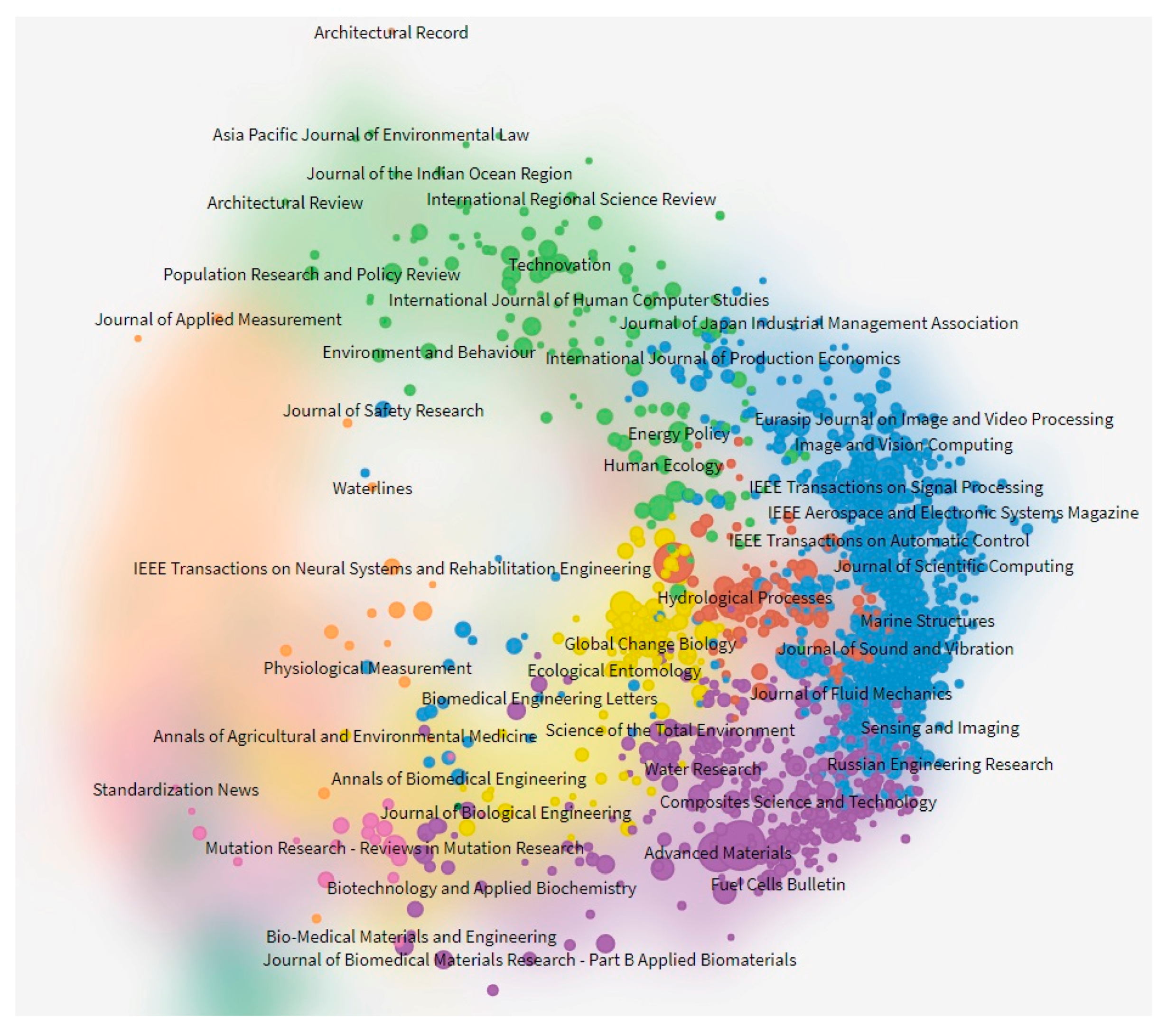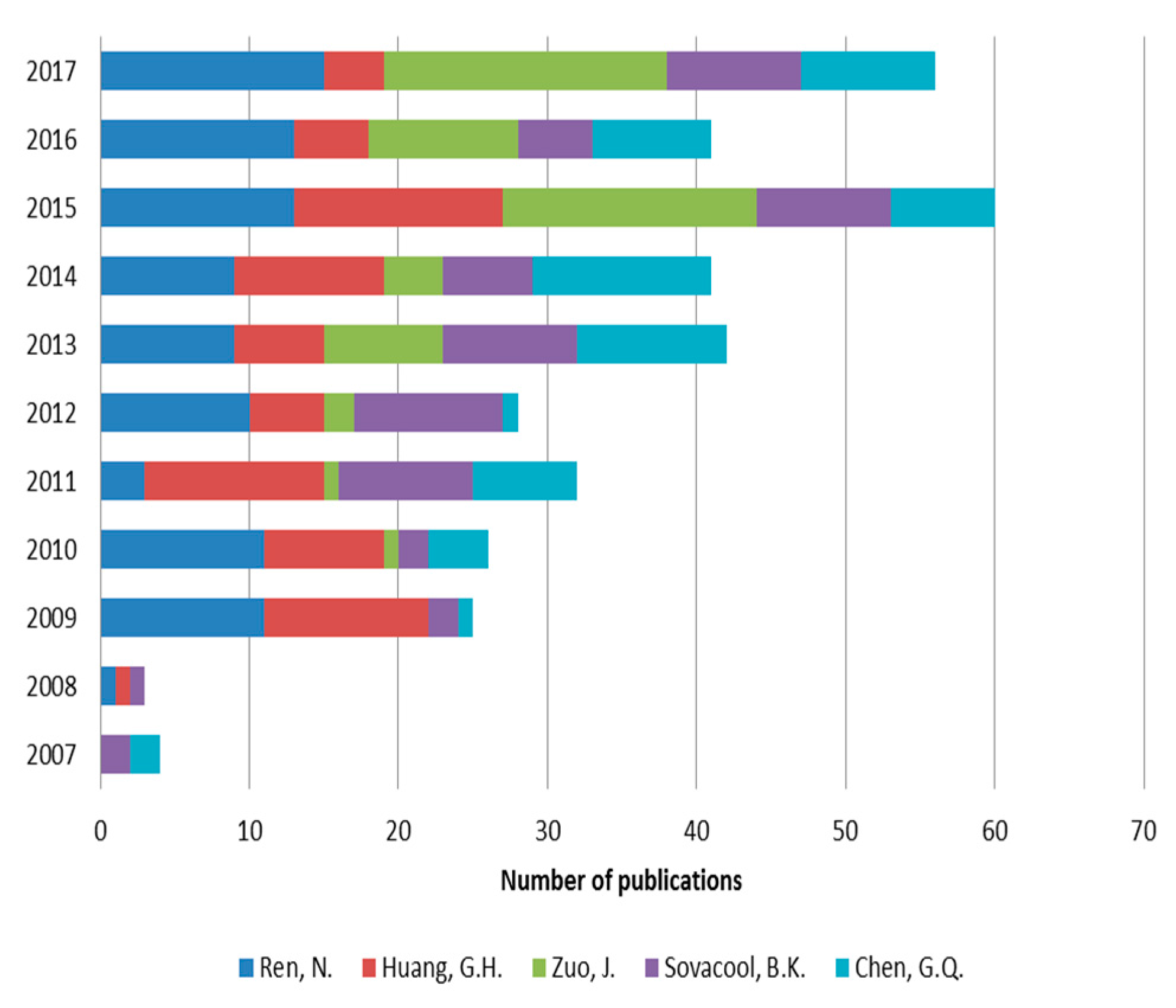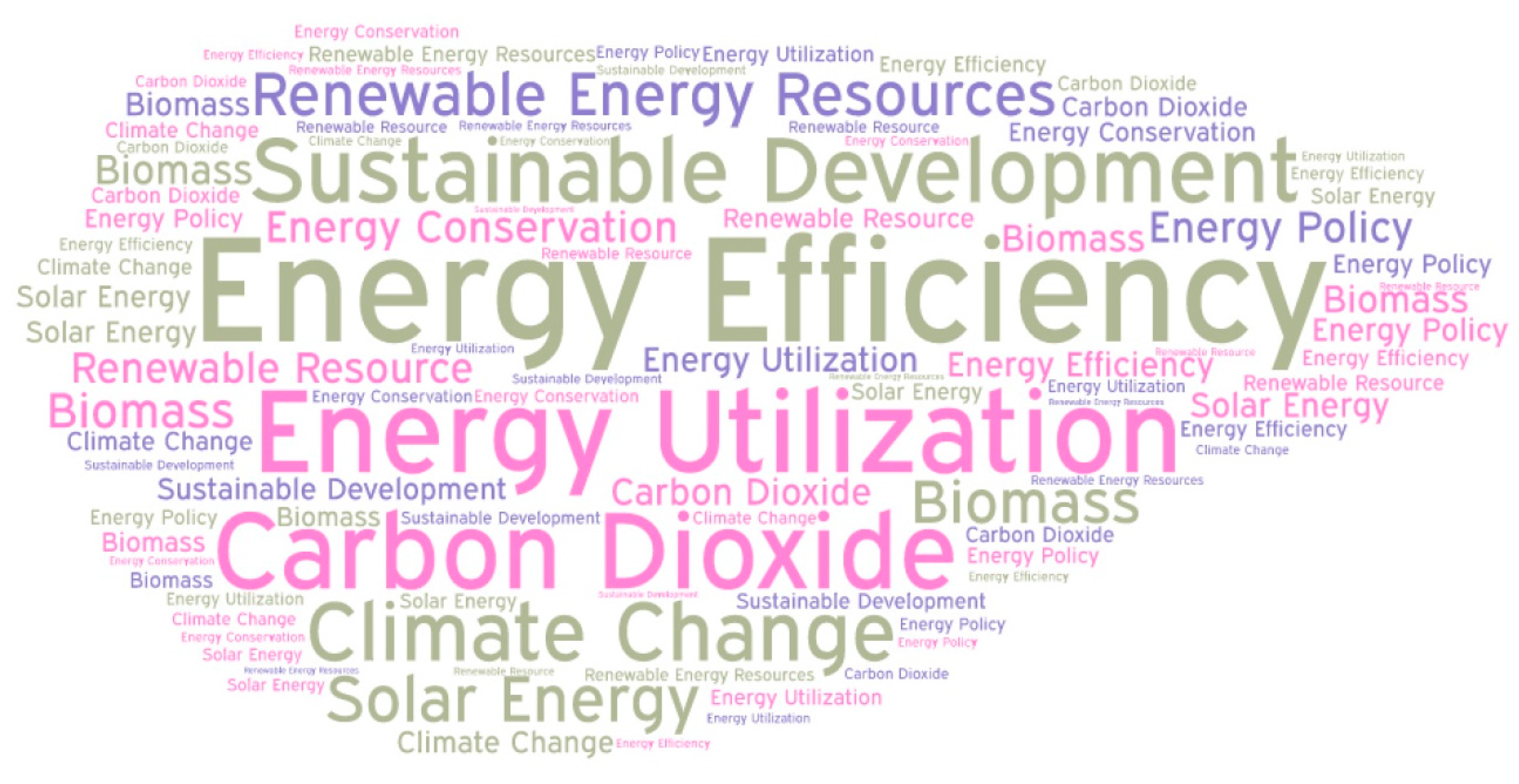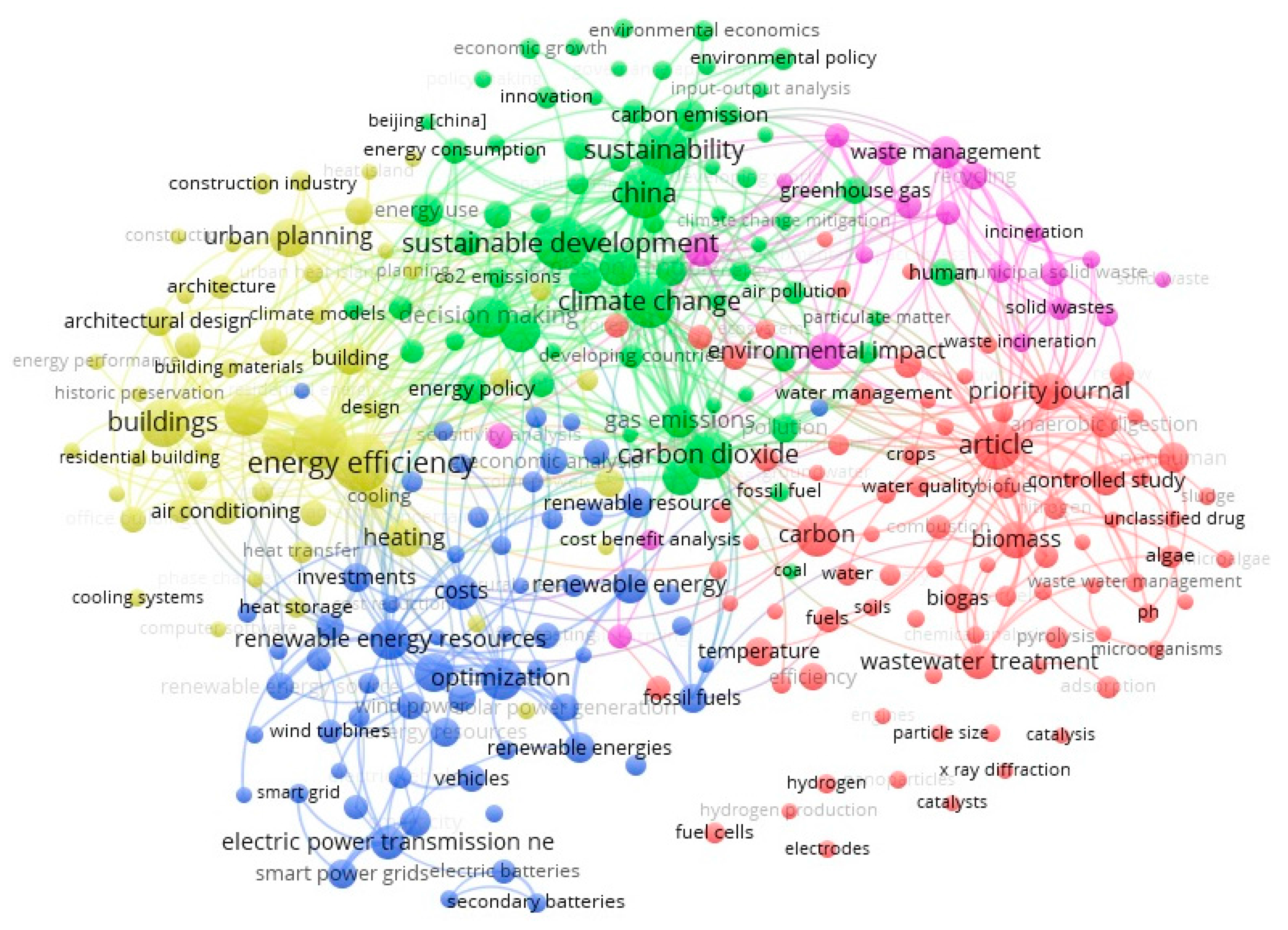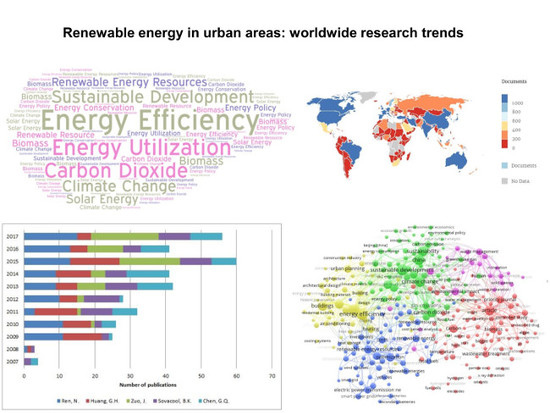1. Introduction
Energy production and consumption have considerations that affect both sustainability and economy [
1]. Indeed, not only the depletion of fossil resources and generated greenhouse gasses emissions, as a consequence of a coal and oil based model, or the occupation of natural spaces for renewable models of centralized production should be taken into account, but also the increasing cost of energy [
2,
3]. In the economic activity, this cost has an impact on the income statement, which may involve a variable amount in relation to the total costs of the activity, usually ranging from 5 to 40% of the costs necessary to produce or provide the services [
4].
On the whole, energy efficiency is defined as the relationship between the production of goods or services and the energy expenditure required [
5]. Thus, through energy efficiency, the reduction in energy consumption is sought by maintaining the same uses of energy that is, without reducing the level of production or decreasing the level of comfort, ensuring supply, promoting sustainability and protecting the environment. This reduction involves the different sources of energy used, such as oil, coal, natural gas, etc. [
6,
7,
8].
The group of fossil fuels (coal, oil and natural gas) used worldwide as a source of energy represents a very high percentage of the primary energy used. This is leading to its depletion and resulting in the increase of prices [
9].
Because of the above, it can be said that the current energy system presents serious problems that are summarized in the depletion of fossil fuel reserves, negative consequences for the environment (climate change, greenhouse effect, acid rain, deforestation, etc.) and instability of the geopolitical system caused mainly by inequality in the distribution of energy consumption and reserves [
10,
11,
12].
The alternative to these problems raised by the current global energy system should be the progressive implementation of measures that promote sustainable development [
13,
14,
15]. In the current economic model, three production sectors are of great importance for saving energy and reducing pollution and, therefore, for sustainable development: construction by improving building techniques [
16]; the energy producing sector with cogeneration systems [
17,
18,
19], hybrid systems (wind-diesel) and alternative sources [
20,
21]; and the transport sector using unleaded gasoline, biofuels, catalytic filters and mixed and electric vehicles [
22,
23,
24].
On the other hand, renewable energies cover only 15% of the world’s energy sources, and fossil fuels will continue to satisfy a large part of the world’s energy demand for the foreseeable future [
25]. The energy sector is responsible for two thirds of global CO
2 emissions and one of the main drivers of climate change. Therefore, to limit this increase in emissions, strategic plans have been put in place such as the Strategic Framework for 2030 of the European Union, or the Clean Energy Plan of the United States in which countries involved are committed to reducing CO
2 emissions by 32% by 2030 [
26,
27].
There are twice as many inhabitants in the world compared to the year 1960, and the population is expected to continue growing to reach 9000 million by 2050 [
28]. According to predictive models, developing countries will experience 99% of this population growth, with a 50% population increase in urban areas. In accordance with the information given by the United Nations in relation to the environment program, in Latin America, which has a high degree of urbanization, 78% of its inhabitants resided in urban areas in 2007, and it is expected that this percentage will increase to 89% by 2050 [
29]. In less urbanized countries such as Asia and Africa, with 40% of the population living in cities, a high rate of increase in the urban population is also expected, reaching 62% by 2050. According to the United Nations forecasts, in 2050, the number of people who will live in cities will amount to 6000 million [
30]. However, the increase in urbanization also means new opportunities for policy makers in developing countries to promote better urban conditions in terms of stricter efficiency standards in buildings, as well as to boost sustainable mobility in order to achieve a sustainable urban development [
31].
Although fossil fuels continue to be the main source of energy in cities, the use of sustainable energy as a policy solution to mitigate the serious pollution issues, is becoming more and more essential [
3]. Upcoming technologies such as the use of cogeneration systems and biomass district heating in cities are characterized by energy savings and high energy efficiency. Research and development of renewable energy models in urban areas are becoming an imperative to achieve a sustainable energy system. Many cities have already expressed their commitment towards a 100% renewable model. It is expected that by the year 2025, cities such as Copenhagen and Munich will obtain 100% of their electricity from renewable sources, thus becoming neutral carbon cities [
32].
With regard to the main sources of renewable energy that are currently used in cities, biomass, solar and wind energy are the main technologies, which remain under-researched [
33]. Municipal Solid Waste (MSW) generated in urban areas is generally carried to dumps and buried, without making a sustainable use of it. Once decomposed by anaerobic digestion, they end up generating a methane-rich biogas that reaches the atmosphere and becomes carbon dioxide, one of the main drivers of global warming. This generated biogas can be used for thermal and electrical energy generation, avoiding in this form the negative consequences of its release into the atmosphere. The use of biomass (wastewater, agricultural and livestock waste, urban or industrial residues, remains of trees or crops, ...), for the generation of useful energy-electricity or heat-, is a source of energy production with a large potential, which contributes on the one hand to a more sustainable waste management, and on the other hand, to reduce the energy dependence on fossil fuels [
34].
Moreover, solar energy applied in urban environments is an effective and environmentally friendly technology, since panels and photovoltaic (PV) equipment, as well as thermal solar collectors, can be placed on the roofs of buildings, where they function efficiently, without hindering normal activity and with low maintenance [
35]. It is estimated that the global capacity for concentrating solar energy production will reach 147 GW in 2020, 337 GW in 2030 and 1089 GW in 2050 [
36].
Another growing research trend is related to small-scale wind energy generation. The installation of wind turbines in cities is a simple and eco-friendly technology; since a mini wind generator has a low maintenance cost, is very reliable and has a minimum environmental impact. It also works with low intensity winds, does not need the creation of new electrical infrastructures and has a high efficiency index, since it avoids the losses that occur in the transport and distribution electricity grids [
37]. A Chinese home, for example, would currently need a 1 kW turbine to generate all the energy needed for a year; a European house would not need more than 4 kW, and an American home would need roughly a 10 kW wind turbine to cover an average consumption of 11,500 kWh of annual electricity [
38].
Nowadays, the use of green energy in urban areas represents a field of great interest to the scientific community. The large-scale urban generation of renewable energy is postulated as a solution for the development of sustainable energy, both, to meet the growing demand for energy in cities and, to reduce greenhouse gasses emissions [
39]. Research is needed to achieve more efficient, profitable and sustainable renewable sources. Then, the knowledge about the distribution of the worldwide scientific scene with regard to the urban generation and use of renewable energy in cities is of utmost interest [
40].
Because there are two widely used databases, Web of Science (WoS) and Scopus, the problem related to the statistical data provided from different sources arises, as regards their comparability and stability. The overlay among these databases and the effect due to the use of data coming from different sources for specific research fields in bibliometric indicators, have been studied. To solve this problem, and taking into account some studies involving citations, it has been limited the citation period from 1977 onwards, since Scopus citations are comparable to Web of Science citations in this period (the citation coverage from Scopus); it has been proved that each database covers approximately 90% of the references identified by the other [
41]. Nevertheless, if the scope of WoS and Scopus journals is taken as an indicator, a comparative study shows that Scopus has a greater coverage of active academic journals (20,346 journals) compared to WoS (13,605 journals) [
42], being the correspondences between the data obtained with both databases in relation to the quantity of documents and citations by country and range extremely high (R
2 ≈ 0.99) [
43]. The advantages of Scopus database are highlighted in diverse papers and, consequently, is frequently employed for many bibliometric analyses [
44,
45].
The ultimate purpose of this study is to establish the current situation as well as the research trends in the field of renewable energy in urban areas over the 1977–2017 period, in order to help the scientific world to have a greater understanding about the present and future situation, providing useful information to foresee future tendencies that might occur in research lines.
2. Materials and Methods
Bibliometrics is the branch of bibliology that studies the scientific production contained in various types of documents through statistical methods. Bibliometrics is considered one of the key research tools widely extended to all scientific fields, being frequently used in the evaluation of the results of peer-reviewed research.
On the other hand, the Scopus database, which has a catalog of more than 20,000 publications coming from more than five thousand international publishers, has been chosen in this study, owing to the fact the scientific community agrees on its great usefulness as the largest source of data and citations on the referenced literature.
Through the use of this database, a thorough search of the subfields of the title, abstract, and authkey involving the topics of renewable energy and city has been accomplished. The search was limited between the years 1977 and 2017. The success of this methodology has also been proved by other studies [
46,
47,
48,
49].
The following search pattern has been used, in order to avoid distorting the results: (TITLE-ABS-KEY ({Renewable energy} AND ({urban} OR ({cit*})).
Several indices, as well as the statistical indicators in lot of interest areas can be established by combining the field results with the information collected. The publications found concerning renewable energy and urban areas or cities over the time frame from 1977 to 2017 were assessed based on different criteria such as kind of publication, language, scientific product features, distribution of publications by country and institution, categories of distribution topics, analysis of citations as well as the frequency of the key word appearance. For the analysis of citations, the influence of the h-index has been taken on board. This index, which was suggested in 2005 by Hirsch, is extensively used to evaluate the impact of an individual researcher. It is considered the most reliable way to measure the work scientific quality, evaluating the regularity of production and predicting the future result, since it takes into consideration both productivity and impact. The h-index of a researcher is equivalent to the number of articles of that researcher whose number of citations is equal or greater than the number of articles published. That is, if the index h is 20, that means that the author has 20 articles with 20 or more citations each. Therefore, it can be concluded that the higher the h-index, the better the academic scientific quality of the researcher.
4. Discussion and Conclusions
A broad scope of data concerning to the international input to the scientific knowledge of urban generation of renewable energy during the period 1977–2017 has been traced. The data found in more than ten categories have been collected, yielding a total of 46,172 publications. The categories Energy, Environmental Sciences and Engineering stand out, which experienced an exponential growth.
It is pinpointed 2017 as the richest year in scientific production with 9242 publications in all, being the magazine Journal of Cleaner Production the one that accumulated the largest number of publications on the matter. As far as the authors are concerned, Ren, Huang, Zuo, Sovacool, and Chen concentrate the greatest part of the works in the analysed period.
The works have been mostly released in international journals (76%) and congresses (17%), with English being the language used in more than 96.5% of the papers. Regarding the main institutions that have published most of the works in this field, stand out the Chinese Academy of Sciences, Ministry of Education of China, The University of Tsinghua and The Harbin Institute of Technology, which account for half of publications over the last decade. All these institutions (7 of the top ten) are located in China, which demonstrates the great awareness in this country about renewable energy in urban areas.
In mainland Europe, the United Kingdom, Italy, Germany, Spain, Netherlands and France highlight as the main research countries in this field, with the United Kingdom representing 23.06% of the total number of publications in European countries.
Table 6 shows information obtained from both, the World Bank and Scopus database [
52]. China is the country with more documents published, however is important to see that Netherlands has the most number of researchers in Research and Development (R&D) per million people. Considering this, the ratio between these variables shows that Netherlands is the leader with 3.40 documents published per million people spending 2.0% of Gross Domestic Product (GDP) in R&D, however Germany is the country with the highest GDP in R&D with 2.9%. China only has 0.50 documents per million people and spend 2.1% of GDP, but is necessary to consider its population.
Focusing on the keywords study, found publications reveal a considerable dispersion in the utilization of the keywords group. In fact, many compound words are employed, which increase the number of unique terms. In addition, the same term can be typed differently according to the author, giving rise to a broader fictitious range.
The terms most frequently used are “energy efficiency”, “sustainable development”, “energy utilization”, “carbon dioxide”, and “renewable energy resources”. There is a clear trend towards the use of the term energy efficiency, which refers to the increase of productivity with the same energy utilization, and whose synergy with renewable energy is considered a key dynamic duo to achieve a sustainable development.
The analysed data comes to the conclusion that the international contribution to the scientific knowledge of renewable energies in urban areas is outstanding, producing a vast quantity of publications in congresses and high-impact journals. The important boom in renewable energy throughout the world, and especially in industrialized countries, as a key element to mitigate the climate change effects, has also boosted the research in this field. However, it is also necessary to promote research and use of renewable energy in urban areas of developing countries, where there will be a significant increase in urban population in the coming decades, as in the case of Latin American countries. Therefore policy makers in these countries should promote better urban conditions in terms of stricter efficiency standards in buildings, as well as to boost sustainable mobility in order to achieve a sustainable urban development. Analyses made show that countries with stable regulatory frameworks in renewable energies are the ones that benefit the most from the value generated by this sector at the local level.
